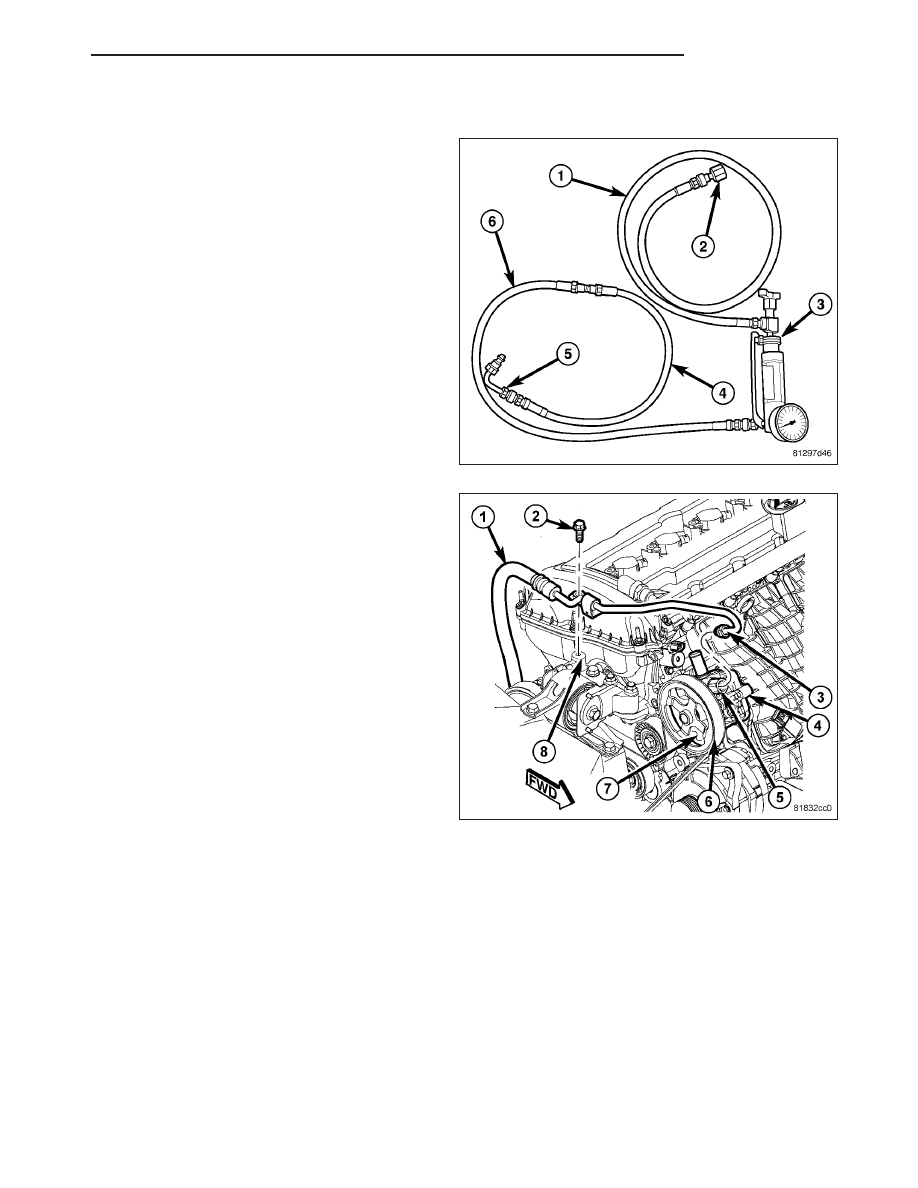Content .. 1152 1153 1154 1155 ..
Dodge Caliber. Manual - part 1154

Power Steering Analyzer Kit 6815 with appropriate hoses and adapters. (Refer to 19 - STEERING - SPECIAL
TOOLS)
1. Check the power steering belt to ensure it is in
good condition and adjusted properly.
2. Assemble the following hoses and adapters on the
Flow Meter And Gauge 6800 (1):
a. Gauge end (inlet) – Hose 6905 (6) (in 6893
kit), Hose 6713 (4) (in 6815 kit), Adapter Tube
6844 (5) (in 6893 kit)
b. Valve end (outlet) – Hose 6959 (1), Adapter
Fitting 6826 (2)
PM
STEERING
19 - 3